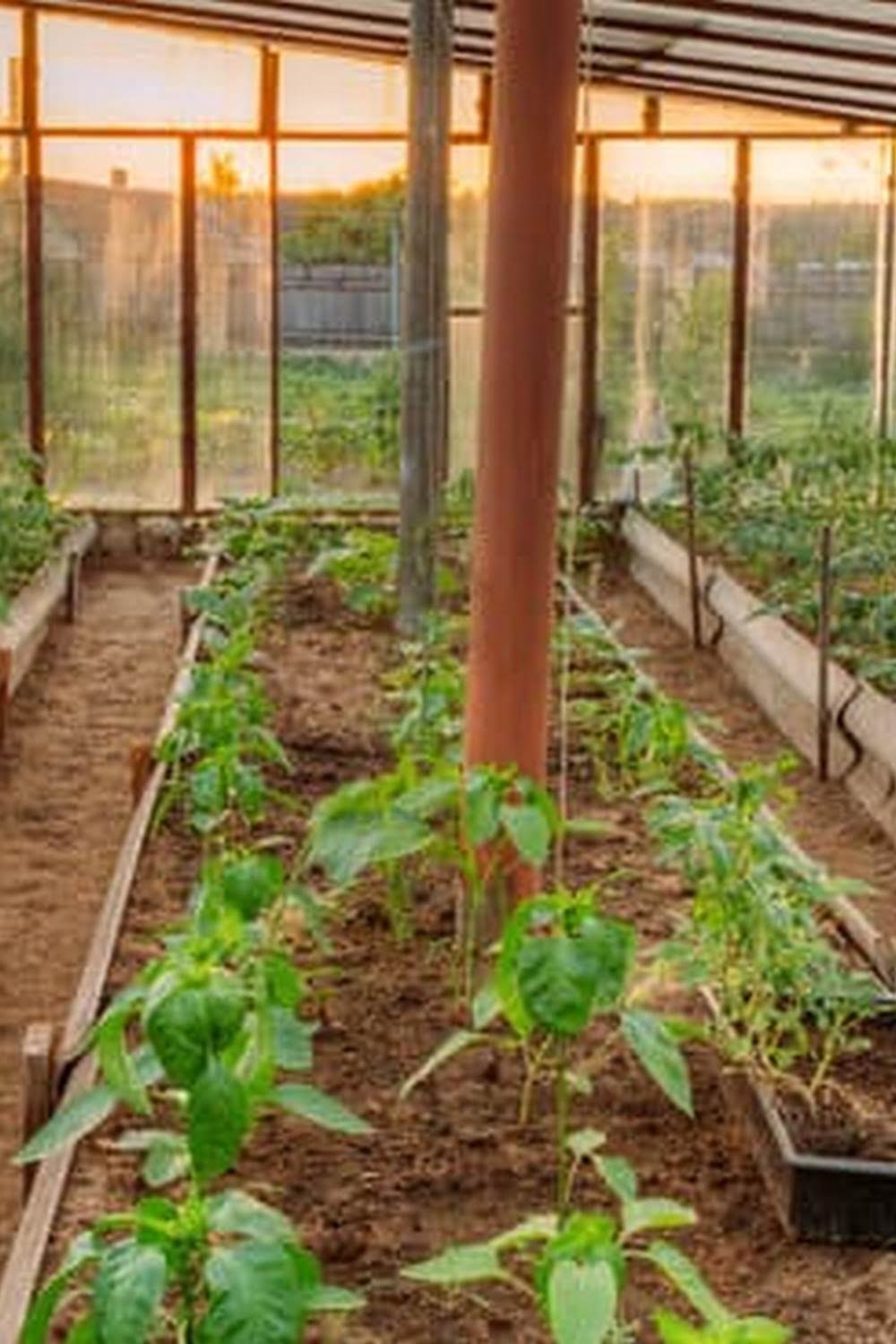Looking to bring the joys of gardening into your urban environment? Urban gardening container vegetables could be the perfect solution for you.
With limited outdoor space, urban dwellers often rely on containers to grow their favorite fruits and vegetables. In this article, we’ll explore the benefits of container gardening in an urban setting, how to choose the right containers, which vegetables thrive in containers, maintenance tips for a healthy garden, maximizing space, creative ideas for showcasing your container garden, success stories from other urban gardeners, and resources for learning more about this rewarding hobby.
Container gardening offers a myriad of benefits for city-dwellers. From providing fresh produce and greenery in small spaces to promoting sustainability and reducing food waste, growing vegetables in containers is both practical and fulfilling. Whether you’re a beginner or a seasoned gardener, there are plenty of opportunities to explore the joys of urban gardening through container vegetables.
When it comes to choosing the right containers for growing vegetables in an urban setting, there are several factors to consider such as size, material, drainage, and mobility. We’ll delve into these considerations and provide practical tips on how to select the best containers for your specific needs and space constraints. Join us as we embark on a journey into the world of urban gardening through container vegetables.
Benefits of Container Gardening in an Urban Setting
Urban gardening in containers has become increasingly popular in urban settings due to the limited space available for traditional gardening. There are numerous benefits to growing vegetables in containers in urban areas, making it an ideal option for those who want to grow their own produce but have minimal outdoor space.
One of the primary advantages of container gardening in an urban setting is the ability to control the environment in which the vegetables are grown. Containers can be moved around to take advantage of sunlight and can also be brought indoors during inclement weather. This level of control can result in healthier plants and a longer growing season.
Additionally, container gardening allows for greater flexibility and creativity in designing the garden space. Since containers can be placed on rooftops, balconies, patios, and even windowsills, urban gardeners can make use of every available space to grow their own vegetables. This not only adds greenery and beauty to urban environments but also provides a sustainable source of fresh produce.
Moreover, container gardening offers an opportunity for city dwellers to reconnect with nature and experience the satisfaction of growing their own food. For those living in urban areas with limited access to green spaces, having a container vegetable garden can significantly improve overall well-being and mental health. Overall, container vegetable gardening is a practical and rewarding way for urban residents to cultivate fresh produce despite spatial limitations.
| Advantages | Description |
|---|---|
| Controlled Environment | Ability to move containers for better sunlight and protection from bad weather. |
| Flexibility and Creativity | Container gardens can be placed almost anywhere within the city landscape. |
| Mental Health Benefits | Bringing nature into urban living spaces has positive effects on mental health. |
Choosing the Right Containers for Growing Vegetables
When it comes to urban gardening and growing vegetables in containers, choosing the right containers is essential for the success of your garden. There are a few key factors to consider when selecting the perfect containers for your urban vegetable garden.
Size and Depth
One of the most important things to consider when choosing containers for growing vegetables is the size and depth of the containers. Different vegetables have different root depths, so it’s crucial to choose containers that will allow for sufficient root growth. Larger, deeper containers are ideal for vegetables like tomatoes and peppers, while shallow-rooted crops like lettuce and herbs can thrive in smaller pots.
Drainage
Proper drainage is essential for container gardening, as waterlogged soil can lead to root rot and other issues. Look for containers with drainage holes in the bottom to allow excess water to escape. If you fall in love with a container that doesn’t have drainage holes, you can always drill some yourself.
Material
The material of your containers can also make a difference in how well your vegetables grow. Plastic and fiberglass containers are lightweight and easy to move around, but they can also retain more heat than other materials. Terra cotta pots are great for plants that prefer drier soil, as they allow for better air circulation. Consider these factors when choosing the right material for your urban gardening container vegetables.
Selecting the Best Vegetables for Container Gardening
When it comes to urban gardening, choosing the right vegetables for container gardening is essential for a successful harvest. Not all vegetables are suitable for growing in containers, so it’s important to select varieties that are well-suited to this method of gardening.
Some of the best vegetables for container gardening include tomatoes, peppers, lettuce, spinach, radishes, carrots, and herbs like basil and parsley. These vegetables and herbs thrive in containers and can be grown successfully on balconies, patios, or even windowsills in urban settings. Additionally, compact or dwarf varieties of vegetables are ideal for container gardening as they require less space and can adapt well to confined growing conditions.
One key consideration when selecting vegetables for container gardening is the amount of sunlight available in your urban garden. Most vegetable plants require at least 6-8 hours of sunlight per day to thrive, so it’s important to choose vegetables that match the light conditions of your outdoor space. For example, leafy greens like lettuce and spinach can tolerate some shade, while sun-loving plants like tomatoes and peppers require full sun exposure.
Another factor to consider when choosing vegetables for container gardening is the size of the plant and its root system. Vegetables with shallow root systems such as lettuce and herbs are well-suited for smaller containers, while larger containers are necessary for deep-rooted plants like tomatoes and peppers.
By carefully selecting the right vegetables for your urban garden containers based on these considerations, you can maximize your chances of a successful harvest and enjoy home-grown produce even in small spaces.
Tips for Maintaining a Healthy Container Vegetable Garden
Maintaining a healthy container vegetable garden in an urban setting requires careful attention to the needs of the plants and the containers they are grown in. Here are some essential tips for maintaining a thriving container vegetable garden:
- Proper watering: Container vegetables often require more frequent watering than those grown in the ground. It’s important to monitor the moisture level of the soil and water accordingly, making sure not to overwater or underwater the plants.
- Regular fertilization: Nutrients can become depleted more quickly in container gardening, so it’s crucial to fertilize your vegetables regularly. Choose a high-quality, organic fertilizer suitable for vegetable plants and follow the instructions for application.
- Pruning and harvesting: Keep an eye on your container vegetables for any signs of overgrowth or overcrowding. Prune as needed to promote healthy growth and abundant yields. Regularly harvest ripe vegetables to encourage continuous production.
In addition to these basic maintenance tasks, urban gardeners should also be mindful of potential pests and diseases that can affect their container vegetables. Inspect your plants regularly for any signs of infestation or illness, and take prompt action to address any issues that arise.
Finally, it’s important to provide adequate support for climbing or vining vegetables such as tomatoes, cucumbers, and peas. Install trellises or stakes in your containers to help these plants grow upward and prevent them from becoming tangled or damaged.
By following these tips for maintaining a healthy container vegetable garden, urban gardeners can enjoy bountiful harvests of fresh produce right at their fingertips – even in limited urban spaces.
Maximizing Space in Urban Gardens for Container Vegetables
When it comes to urban gardening, space is a precious commodity. However, with the rise of container vegetable gardening, urban gardeners are finding creative ways to maximize their limited space and still enjoy the benefits of growing their own fresh produce.
Vertical Gardening
One innovative strategy for maximizing space in urban gardens is through vertical gardening. By utilizing trellises, hanging baskets, or stacking containers, urban gardeners can grow vegetables upward instead of outward. This not only saves valuable ground space but also adds an aesthetically pleasing element to the garden.
Utilizing Balconies and Rooftops
For city dwellers with limited outdoor space, balconies and rooftops provide an opportunity for container vegetable gardening. With proper planning and lightweight containers, urban gardeners can transform these often underutilized spaces into thriving vegetable gardens. Additionally, utilizing sturdy railing or wall-mounted containers can help maximize space while ensuring safety and stability.
Community Gardens
In some urban areas, community gardens serve as a valuable resource for those with limited space at home. Many community gardens offer designated plots or shared container space for individuals to grow their own vegetables. This not only allows urban gardeners to maximize their growing area but also fosters a sense of community among like-minded individuals passionate about sustainable living and healthy eating.
Overall, by implementing creative techniques such as vertical gardening, utilizing balconies and rooftops effectively, and taking advantage of community garden spaces, urban gardeners can maximize their limited space for growing delicious and nutritious container vegetables right in the heart of the city.
Creative Ideas for Urban Gardeners to Showcase Container Vegetables
Urban gardeners in urban settings often have limited space to work with, but that doesn’t mean they can’t showcase their flourishing container vegetables in creative and eye-catching ways. Here are some innovative ideas for urban gardeners to showcase their container vegetables:
1. Vertical Gardens: Utilize vertical space by creating a stunning vertical garden using hanging containers or wall-mounted planters. This not only maximizes space but also adds visual interest to any urban garden.
2. Edible Balcony Gardens: For urban dwellers with balconies or small outdoor spaces, consider creating a beautiful edible balcony garden using an assortment of containers filled with different types of vegetables. Mix and match colorful pots and plants for a vibrant and inviting look.
3. Repurposed Containers: Get creative by repurposing unconventional items as containers for vegetable gardening, such as old tires, wooden crates, or even vintage bathtubs. Not only is this environmentally friendly, but it also adds a unique touch to the urban garden.
4. Community Container Gardens: Collaborate with neighbors or local community groups to create a communal container vegetable garden in shared spaces such as rooftops, alleyways, or vacant lots. This fosters a sense of community while showcasing the beauty of urban gardening.
5. Mobile Garden Displays: Consider using wheeled carts or movable planters to create mobile displays of container vegetables that can be easily rearranged and showcased in different areas within the urban setting.
By embracing these creative ideas, urban gardeners can proudly showcase their thriving container vegetables while adding greenery and freshness to their surroundings. These innovative approaches not only maximize limited space but also inspire others to appreciate the beauty and productivity of urban gardening with container vegetables.
Success Stories of Urban Gardeners Who Have Grown Vegetables in Containers
Many urban gardeners have found great success in growing vegetables in containers, despite the limited space and resources available to them. One such success story is that of Sarah Johnson, a city-dweller who transformed her small apartment balcony into a thriving container garden. With the help of vertical planters and innovative irrigation systems, Sarah has been able to harvest a variety of vegetables, including tomatoes, peppers, and herbs, right from her balcony.
Another inspiring example comes from the Smith family, who turned their tiny backyard into a bountiful garden by using raised beds and large containers. By carefully selecting the right vegetables and diligently maintaining their garden, they’ve been able to enjoy homegrown produce throughout the year. Their success has not only provided them with fresh and organic vegetables but has also inspired their neighbors to start their own container gardens.
These success stories highlight the potential for growing an abundance of vegetables even in urban settings with limited space. With creativity and dedication, urban gardeners can achieve remarkable results by cultivating a wide range of vegetables in containers.
| Success Story | Details |
|---|---|
| Sarah Johnson’s Balcony Garden | Sarah used vertical planters and innovative irrigation systems to grow tomatoes, peppers, and herbs on her small apartment balcony. |
| The Smith Family’s Backyard Garden | The Smith family transformed their tiny backyard using raised beds and large containers to grow a variety of vegetables throughout the year. |
Resources for Urban Gardeners to Learn More About Container Vegetable Gardening
In conclusion, urban gardening container vegetables offer a multitude of benefits for those living in urban settings. Not only does it provide a sustainable and cost-effective way to grow your own fresh produce, but it also allows individuals to maximize the limited space available in urban areas. With the right containers and vegetables, anyone can create a thriving container vegetable garden right in their own home.
For those interested in learning more about container vegetable gardening, there are numerous resources available to help urban gardeners get started. From online articles and forums to local workshops and community gardens, urban dwellers have access to a wealth of information and support. Additionally, many gardening stores offer expert advice on choosing the right containers, selecting the best vegetables, and maintaining a healthy container garden.
Furthermore, success stories abound from urban gardeners who have overcome the challenges of limited space and still managed to grow an abundance of fresh vegetables in containers. These stories serve as inspiration for new gardeners and showcase the endless possibilities for urban gardening.
With dedication and creativity, anyone can turn their urban space into a flourishing haven for container vegetables. Whether you’re looking to start small with just a few containers or fully transform your outdoor space into an urban oasis, container gardening offers endless opportunities for city dwellers to connect with nature and enjoy the fruits of their labor right at home.
Frequently Asked Questions
What Are the Best Vegetables for Container Gardening?
The best vegetables for container gardening are those that don’t require a lot of space to grow, such as cherry tomatoes, peppers, lettuce, and herbs like basil and parsley. These plants can thrive in containers on a balcony or patio.
What Vegetables Grow Well Together in a Container?
Many vegetables can grow well together in a container, as long as they have similar sun, water, and soil requirements. For example, tomatoes and basil make good companions, as do carrots and radishes. It’s important to research which plants complement each other’s growth before planting them together.
How Do You Grow Vegetables in a Small Urban Garden?
Growing vegetables in a small urban garden requires maximizing the use of space through methods like vertical gardening, raised beds, and intercropping. Choosing compact varieties of vegetables and using containers or hanging pots can also help make the most of limited space. Regular watering and proper soil nutrition are essential for successful growth in small gardens.

If you’re looking to get into vegetable gardening, or are just looking for some tips on how to make your current garden better, then you’ve come to the right place! My name is Ethel and I have been gardening for years. In this blog, I’m going to share with you some of my best tips on how to create a successful vegetable garden.





